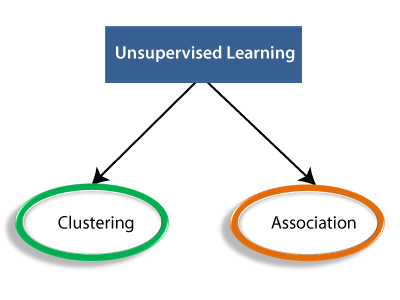Unsupervised Machine Leaning
Introduction
Unsupervised machine learning is a type of machine learning where the model is trained on unlabeled data without any explicit supervision or guidance. Unlike supervised learning, where the algorithm is provided with labeled data and learns to predict outcomes based on that labeled data, unsupervised learning involves finding hidden patterns or structures in the data without any predefined categories or labels.
Clustering and dimensionality reduction are common tasks in unsupervised learning. In clustering, the goal is to group similar data points together into clusters, while in dimensionality reduction, the goal is to reduce the number of features in the data while preserving its important structure and patterns.
Popular algorithms used in unsupervised learning include k-means clustering, hierarchical clustering, DBSCAN, PCA (Principal Component Analysis), t-SNE (t-distributed Stochastic Neighbor Embedding), and autoencoders. These algorithms are widely used in various fields such as data mining, pattern recognition, anomaly detection, and recommendation systems.
In simple words:
Think of unsupervised learning like exploring a new city without a map or tour guide. You're trying to figure out what's interesting or important on your own, without anyone telling you where to go or what to look for.
In unsupervised learning, the computer looks at a bunch of data but doesn't have any labels or instructions about what the data represents. It's like looking at a big puzzle with no picture on the box to guide you. The computer's job is to find patterns or group similar things together without being told what those patterns are or what the groups should be.
For example, imagine you have a bunch of pictures of animals but without any labels saying which animal is which. Through unsupervised learning, the computer might figure out that some pictures look similar because they show cats, while others show dogs, and so on, without being explicitly told what a cat or a dog looks like.
Unsupervised learning is like letting the computer explore and discover things on its own, without someone holding its hand and telling it what to find.
Here's how supervised learning works:

- Input Data: First, you provide the algorithm with a set of data points. These data points could be anything from images and text to numerical values representing various features.
- Exploring Data Patterns: The algorithm starts exploring the data, looking for similarities, differences, or other patterns within the dataset. It does this by analyzing the relationships between data points and identifying clusters, groupings, or other structures.
- Features Extraction or Dimensionality Reduction: Sometimes, unsupervised learning involves reducing the complexity of the data by extracting important features or reducing the number of dimensions. This step can help in visualizing the data or making it more manageable for further analysis.
- Clustering or Association: One common task in unsupervised learning is clustering, where the algorithm groups similar data points together into clusters. Another task is association, where the algorithm identifies relationships or associations between different variables or data points.
- Evaluation and Interpretation: Once the algorithm has completed its analysis, the results are evaluated and interpreted by humans. This step involves understanding the discovered patterns or structures and making sense of what they represent in the context of the problem domain.
- Iterative Improvement (optional): In some cases, the process might be iterative, with the algorithm refining its understanding of the data based on feedback or additional information provided by users.
Unsupervised learning algorithms use various techniques such as clustering algorithms like k-means or hierarchical clustering, dimensionality reduction techniques like PCA or t-SNE, and association rule mining algorithms like Apriori, among others, to accomplish these tasks. The ultimate goal is to gain insights or discover useful information from the data without needing labeled examples or explicit instructions.
Unsupervised learning can be broadly categorized into several types based on the tasks they perform and the techniques they employ. Here are some common types:

- Clustering: Clustering algorithms group similar data points together into clusters based on certain similarity criteria. Examples include k-means clustering, hierarchical clustering, DBSCAN, and Gaussian Mixture Models (GMM).
- Dimensionality Reduction: These techniques reduce the number of features or dimensions in a dataset while preserving its important structure and patterns. Principal Component Analysis (PCA), t-distributed Stochastic Neighbor Embedding (t-SNE), and autoencoders are popular dimensionality reduction methods.
- Association Rule Learning: Association rule learning identifies interesting relationships or associations between variables in large datasets. The Apriori algorithm is a well-known example used for market basket analysis and recommendation systems.
- Anomaly Detection: Anomaly detection algorithms identify data points that deviate significantly from the norm or expected behavior in a dataset. Examples include Isolation Forest, One-Class SVM (Support Vector Machine), and k-nearest neighbors (k-NN) based methods.
- Generative Modeling: Generative models learn the underlying distribution of the data and can generate new data points similar to the ones in the training set. Variational Autoencoders (VAEs), Generative Adversarial Networks (GANs), and Restricted Boltzmann Machines (RBMs) are examples of generative models.
Each type of unsupervised learning serves different purposes and is applicable to various domains and problems. Depending on the nature of the data and the specific task at hand, different techniques may be more suitable for extracting meaningful insights or patterns.

